Feeling sorry for myself
This week: A thorn by any other name; Bee off!; Feeling sorry for myself; Just one to go; Twaining Twees; Summer flowers;
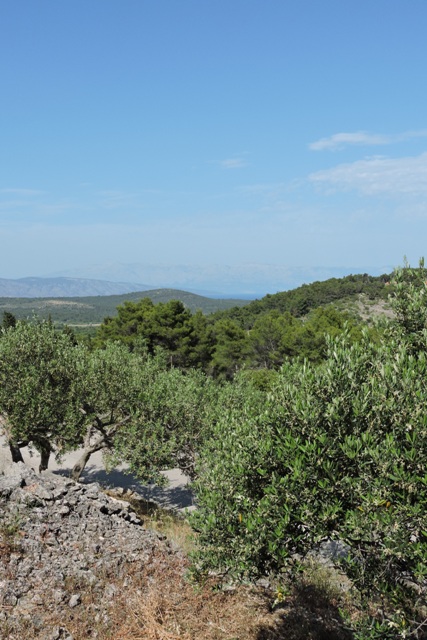
It’s almost full summer here in Dol.
I say ‘almost’ because although the temperature is around 30ºC, it will steadily become hotter as we move through the summer solstice in three weeks.
The temperature always peaks around 38ºC at the start of August. That is a whole two months away though.
As the strong Mediterranean sun beats down, so whatever moisture that is left in the soil disappears. The plants are drawing every drop away and it is just the irrigation which is keeping them alive.
Last week I was trying to identify two wild flowers / plants which I have found on my perambulations.
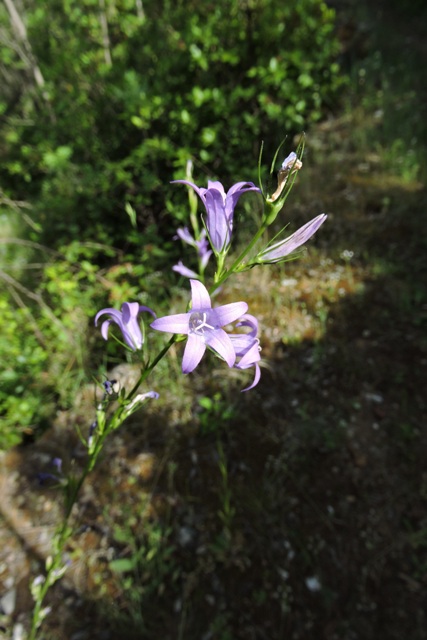
The digital ink was barely dry when I had an email from a colleague suggesting that the blue flower was a Campanula rapunculus. That was the clue which I needed.
I hadn’t associated the five long, separate petals with a Campanula.
Reading up on the flower, the description was close, but I was not certain about the description of the leaves or the calyx.
C. rapunculus has five calix leaves, but I couldn’t see them on my photos. So this week I have been back up the path to take a closer look.
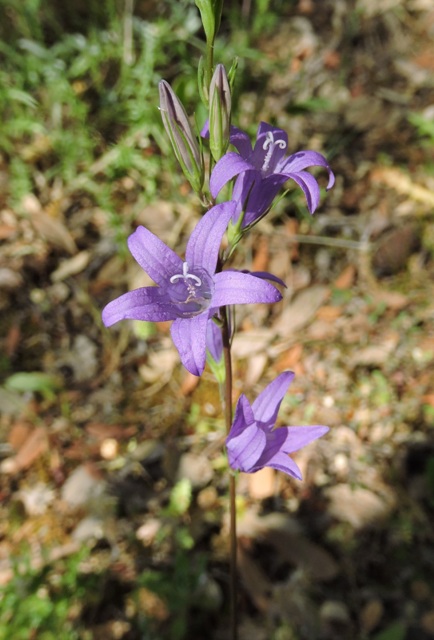
Taking some more photographs, especially of the stem, basal leaves and flowers, I can now identify it as a Campanula patula.
This is a very close relative of C. rapunculus, with the flowers having five almost separate but fused, pointed petals and the stem is completely smooth, whereas the basal leaves are hairy. The base of the C. patula is also red.
In a closeup, this is what I found. The basal leaves are obviously hairy and the stem is red.
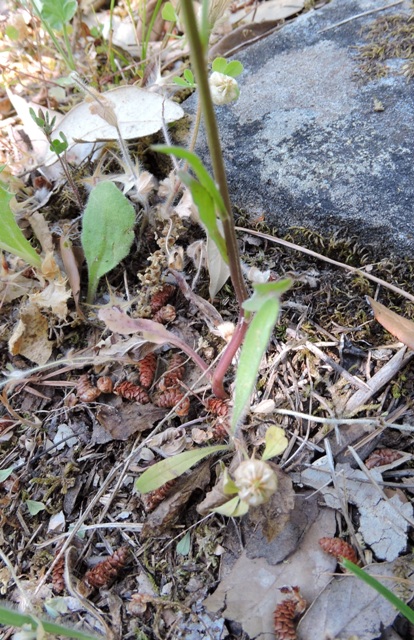
Both varieties are native to Europe. Thank’s Brian for the suggestion.
A thorn by any other name
I was talking to a retired colleague this week, who told me that he has had an accident with a Citrus tree thorn.
The wild citrus have fearsome thorns, some are 6 cm or more long, shaped like Scimitars. Those are the 9th century curved weapon beloved by the near and middle eastern soldiers.
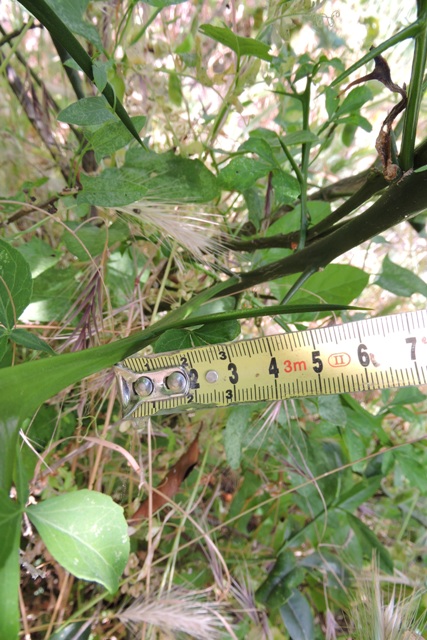
There are a lot of Mediterranean plants which have thorns. Last week I mentioned the climber I had found, on the edge of the Maquis.
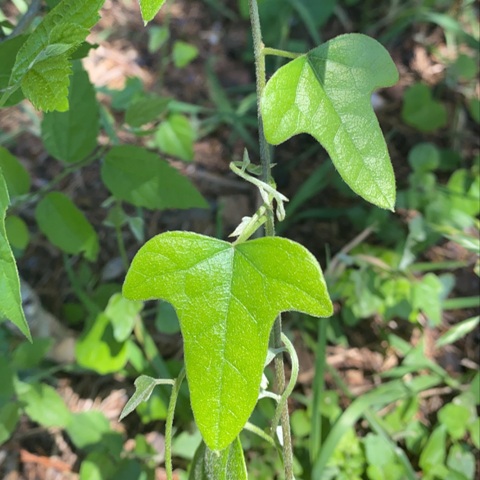
I spent some time going through various websites, starting with the unusual leaf shape, and discovered it was called a “hastate” leaf.
Armed with that information and using some search techniques, I found a reference to a plant with this shape leaf in Georgia, USA. From there I went to a Texas garden site which gave me the family name of “Smilax” .
From Houston I went to a Croatian website and immediately found what I was looking for, Smilax aspera.
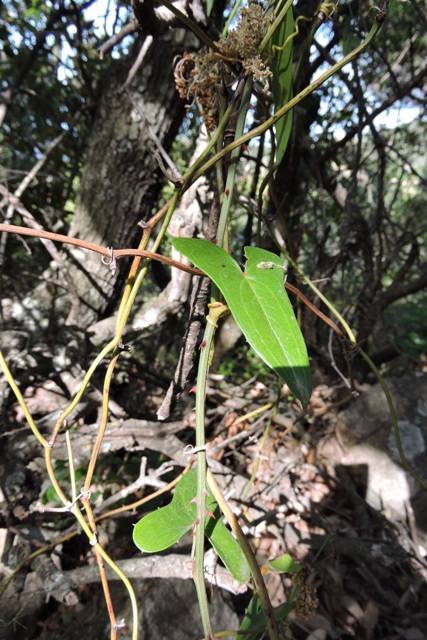
A few minutes later one of my regular Blog readers messaged me suggesting the same plant. So it is another identification to cross off my list.
In one corner of my orchard I have a shrub in flower at the moment. Covered in small yellow flowers, you can see the same shrubs alongside most of the paths around Dol.
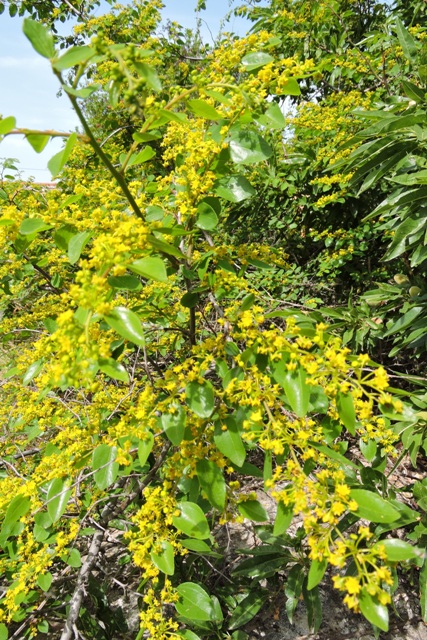
However look closer and examine the plant and you can see that there are a pair of opposing thorns, one straight, one curved like a scimitar at every leaf axil.
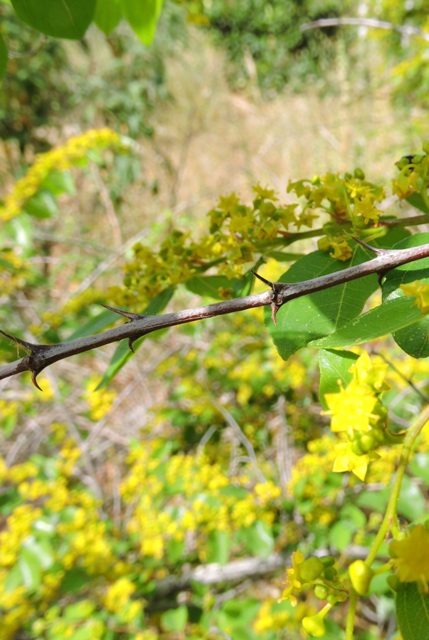
This is the Jerusalem thorn, Paliurus spina-christi. You can easily identify it at any time of the year by the thorny stems and in winter from the brown “flying saucer” shaped seed pods.
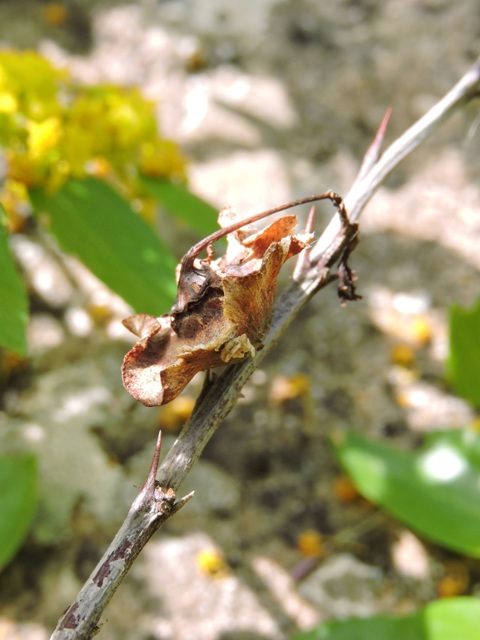
It is one of the suggested shrubs that was used to make Christ’s Crown of Thorns, as evidenced by its Latin name “Paliurus spina-christi”.
Bee off!
I often wish I had more time to do the things which I want to do, rather than all the things which I “have” to do!
Sitting in my study at coffee time on Monday morning, I became aware of a buzzing noise outside the window.
Looking out I couldn’t immediately see anything, so I went back to work on the keyboard.
As the volume of the buzzing increased, I looked again and saw a swarm of bees circling outside. This is the first time I have ever seen a swarm in flight.
It is a function of bee colonies, that a newly hatched Queen will take her maiden flight, and will be at the centre of a swarm of drones which follow her out of the hive.
As I watched, they settled on the chimneypot of my neighbours house across the road. As I was looking, they went inside.
Giving them time to settle, because there were a lot of bees flying around, I went to tell my neighbours about their problem.
His response was that he would light a smoky fire to get them out before they had time to build a nest.
I did suggest leaving them and adding a tap at the bottom of the flue for honey, but he didn’t think this was a very good idea.
I came straight home before he could light the fire in the stove and immediately wrapped cling film around my flue extractor fan.
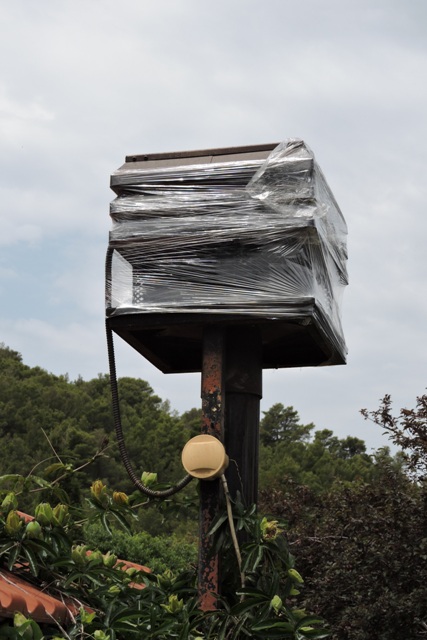
This isn’t the first time I’ve seen bees taking up home in a chimney. My neighbours at the back had the same problem a couple of years ago and much I like bees, I don’t want them inside the flue.
My neighbour lit his fire and very quickly the swarm did an exit from his chimney. I watched again as they settled on the bough of a Pomegranate tree in the garden outside my window.
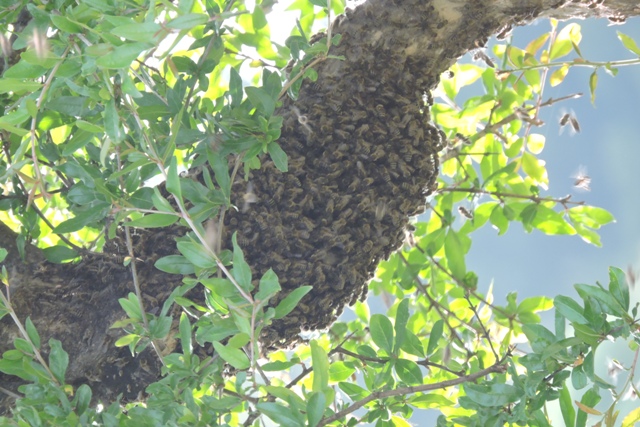
The air was thick with some very unhappy bees.
I have my face veil and hat, gloves and smoker but have never got round to building a Valkyre style long hive here. They are no more difficult to build than cat feeders, it is just a lack of minutes!
It was at this point that I wished I had made the time to build myself a hive or two. Here was a swarm, just ready for collecting…
At 05:30 the following morning, my neighbour Mario, who is a bee keeper, was out in the garden, fully kitted up, ready to collect the swarm.
It took less than half an hour to move the swarm into a super and take them away to their new home.
Feeling sorry for myself
I’ve been to see my dentist this week.
Because of Covid, like most dentists, my dental surgeon hasn’t been seeing patients for some time.
I’ve had a little discomfort for a while. Not toothache, just a feeling that something isn’t right so I made an appointment to see her.
In Croatia, Dentists are called “doctor”.
Because of the strange way British English has developed, doctors are called “Doctor”, Surgeons are always called “Mr”, so Dental Surgeons are afforded the title “Mr”.
I’m not sure how to address a female surgeon, perhaps not “Mrs”, but this traditional naming custom does say something about the UK class and hierarchy system…
My dentist is a private dentist, rather than the state health dentist, whom my Nursing Sister neighbour told me it was best to avoid.
So after almost three years without even a 6 monthly check, I was not surprised there were a couple of fillings which needed replacing.
The modern surgery is part of her home, in a leafy suburb of Stari Grad. That is, if Stari Grad (population c.2,000) is big enough to have a suburb!
I don’t like Dentists – as a profession, not as individuals you understand!
In the past I have had several bad experiences with Dentists in England. So when you find someone who is sympathetic, highly experienced and who you trust, a visit whilst not necessarily pleasant, is not to be feared.
Remember when the dentist used to hold up the metal aspirating syringe in front of you, squirting a little anaesthetic out before plunging it into your gum?

What was worse was watching him sharpen the needle first….
So when my surgeon rubbed a little topical anaesthetic on my gum first, and then used a new digital electronic syringe, I never felt anything.

The work involved two top row teeth (5 & 6 if you are really interested) but I asked about the new instrument.
It seems the idea now is not to instil fear in the patient before carrying out a procedure!
Still, I was in the chair for an hour, but the feeling of discomfort has been fixed and all for around €65 / £55.
It did leave me feeling a little sorry for myself, rather sore and it gave me a reason not to do heavy work for a couple of days!
It seems that things have moved on in dentistry like everything else….
Reading about the dental instruments and techniques used even within living memory, is enough to frighten you away for life.
Looking at some of the dental instruments from the turn of the 20th century is not for the weak hearted.
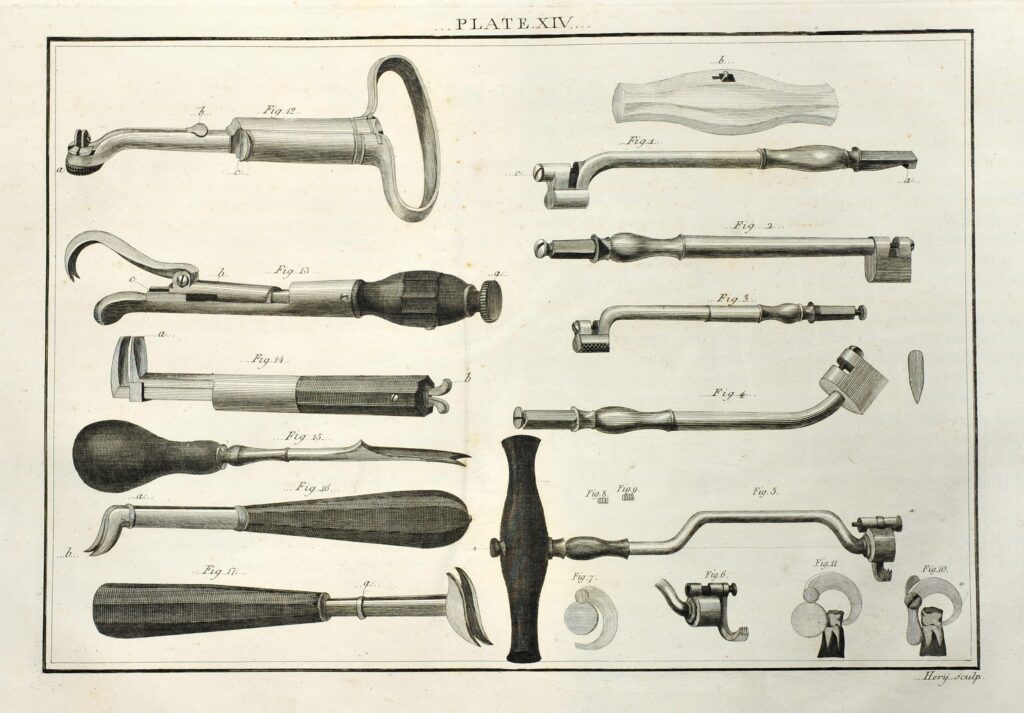
There are many reasons to be pleased we live in the 21st century.
Just one to go
The Madonna lily flowers have opened this week. They are another of my Springwatch indicator species.
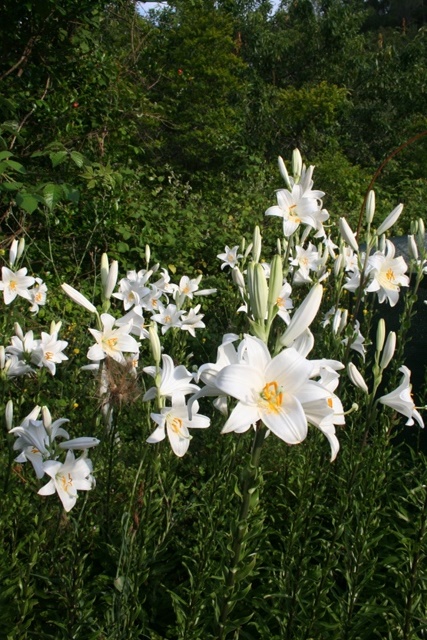
We are at the end of my list of Springwatch species, with just one more to observe for the 2022 list to be complete. That observation will be the first Cicada singing, or more accurately stridulating.
My data has been gathered since I moved here, but it is only in the last 4 years that I have really had a fully developed list of 64 different species.
As I have added species observations over time, so the data is not complete for all species, for all years.
What the data shows is that the early events, taking place in late December to early February are becoming earlier each year.
Average days earlier or later for all species by month:
December -8
January -7
February 0
March +2
April 0
May +2
June -1
Whilst later spring events, in February, March and into April, are much more dependant on what the spring weather is like.
In 2022 because we have had below average temperatures, a number of the indicator events have been much later than previous years. Clearly winter precipitation and spring temperatures are the key.
There are also environmental issues which are way beyond my control.
Visiting Bee Eaters were a regular summer long event around my home. I used to see both large and small flocks almost daily from when the migrants arrived and until they departed.
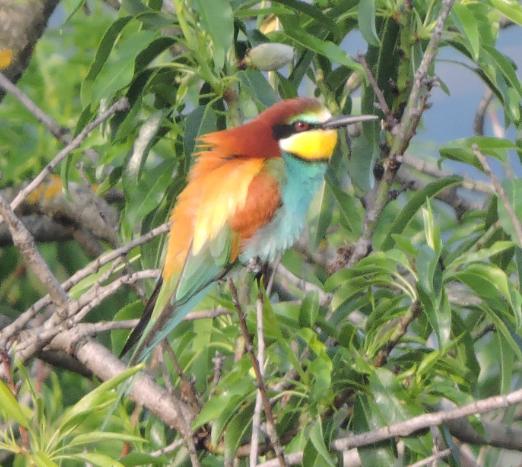
There were two nesting sites on the outskirts of Jelsa, both of which have now been destroyed for building work.
Environmental Impact Statements are sadly not required here before development is approved.
This year I have seen two groups flying over, the first on the 30th April.
However instead of having flocks feeding overhead most evenings, and birds sitting on the wires around my home, calling, there were none last year and none so far this year.
The birds have very specific nesting requirements, digging deep burrows into hard sand. They return to the same nesting sites every year.
Destroy the nesting sites and the birds have nowhere local to go.
So overall Spring is starting earlier each year, probably due to longer autumnal warmth and a shorter winter cold period.
This cold period usually starts after mid-December. However the later spring events, which are not affected by warmer Novembers and Decembers, show little variation in when things happen.
The missing Cicadas (usually first heard around the 12th June) will not materially change my 2022 Springwatch data.
Twaining Twees
I like trees and have planted more than 50 around my home here in Dol.
This is in part because there are such a huge variety of trees that I can grow here, in what is a Mediterranean / tropical climate.
I choose my trees carefully, to provide me with fruit and species that enjoy summer warmth, together with minimum winter cold.
I am experimenting though, with different species from Banana to Guava, usually found deeper into the tropics, and to Green Gage and Damson, usually found in more temperate climates.
In between there are Cosford Cob Nuts, Pistachio and Pecans.
In the courtyard I have planted a Shropshire Damson. I can feel some Sloe Gin on the horizon here and maybe Damson Port…
I would like the courtyard to be a shady place for entertaining, somewhere which is an outdoor living space, but productive too.
The tree seems to be thriving, judging by the amount of growth it has put on this year, so this week I have attempted to add a little direction to its enthusiasm.
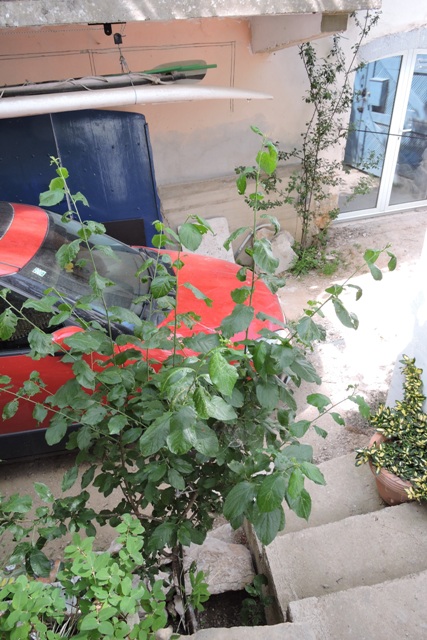
This Damson isn’t a columnar variety so it is growing outwards, as tree branches do.
Because the tree is close to the steps from the courtyard up to the cottage and patio, the sideways growing branches need to be “redirected” whilst they are still green and pliable.
I added a longer vertical pole to the one which is already supporting the tree and then began fastening outward facing shoots to it.
In the autumn when the tree has lost its leaves, I will then prune out the inner most crowding shoots. This will create an open centre around a ‘wine goblet’ shape framework of outer branches.
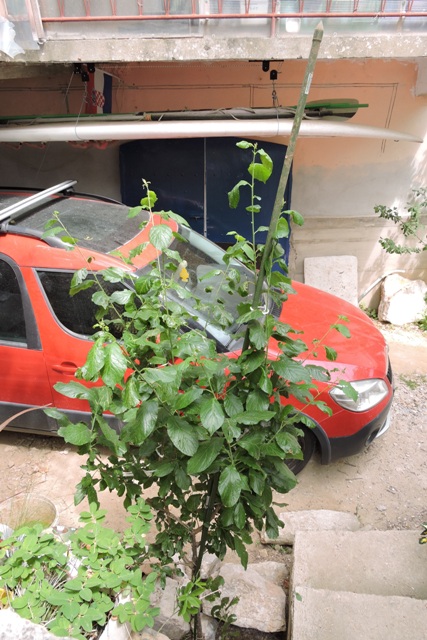
Once the branches are above head height, I will let them develop as they wish.
Some of this year’s shoots are more than 40 cm long and while they are green they are very pliable.
In the meantime, I will no longer have to avoid the shoots going up and down the courtyard steps.
Summer flowers
I am delighted with how my newly constructed border is developing alongside the Top Orchard wall.
Regular readers may recall that I only finished it back in January and then added the plants.

This week the Peruvian Lilies, Alstromeria v. Indian Summer, have burst into flower.
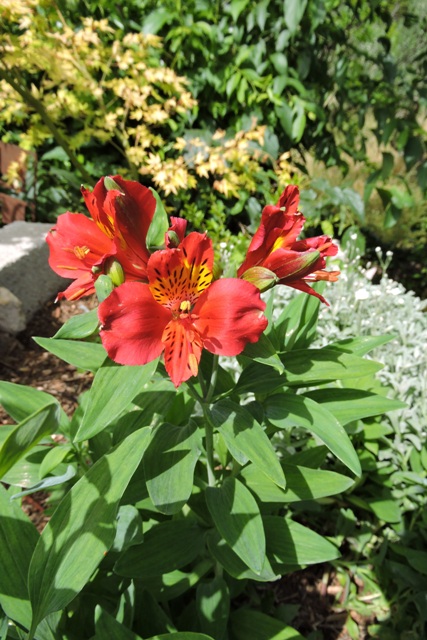
However all is not well with the group I planted. There is a rather large bald patch in the middle of the group where one of the felines like to snooze in the shade they provide.
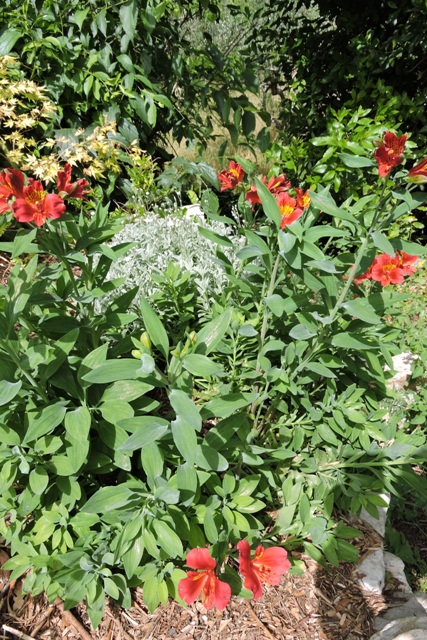
At the other end of the bed, the Wild Gladioli, a Balkan native species Gladiolus Illyricus, are also in flower.
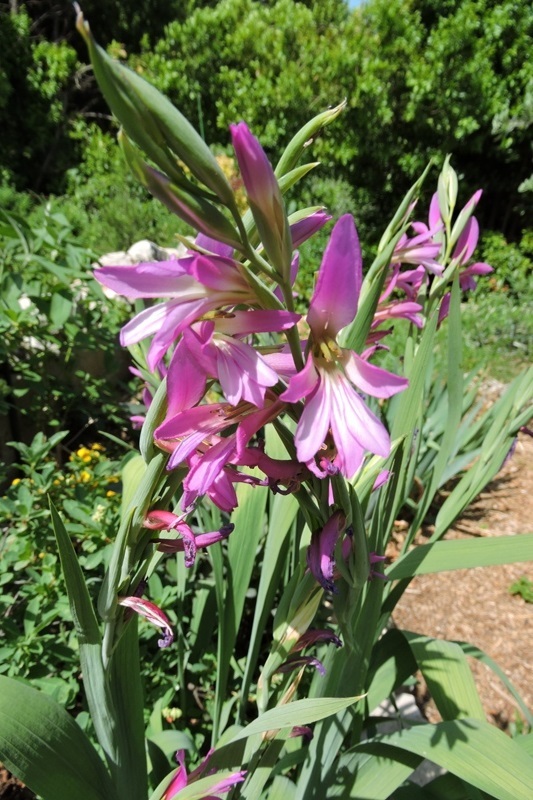
I found these in the orchard and last year marked them, then dug them up and replanted them all in one group.
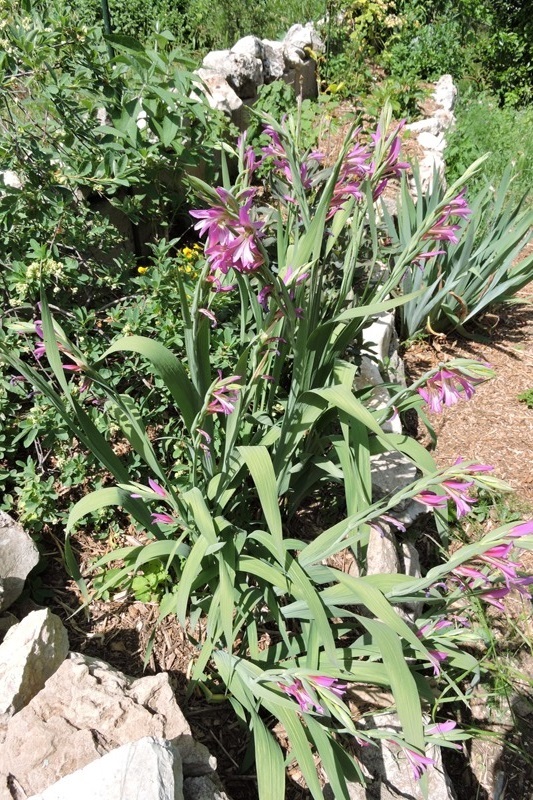
I planted some commercial Gladioli in the citrus orchard and whilst they have always produced leaves, none has flowered. I think they are a candidate for removal and replanting this winter.
One of the colourful South American shrubs which thrives here is the Lantana Camara. I have grown two different coloured varieties. This week the early flowering pink variety are covered with butterflies and insects gathering nectar.
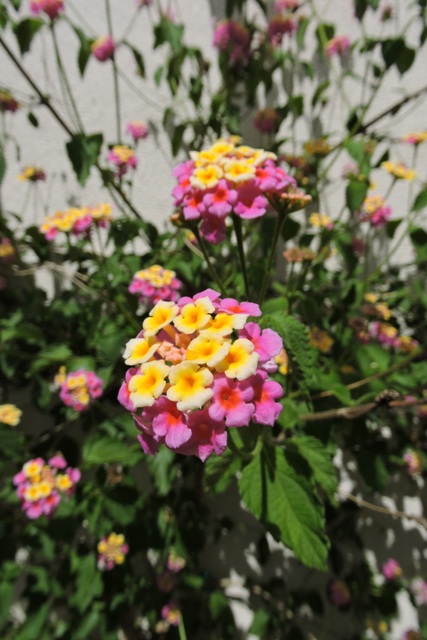
Also in the Top Orchard, the olive trees which I planted five years ago are flowering for the first time.
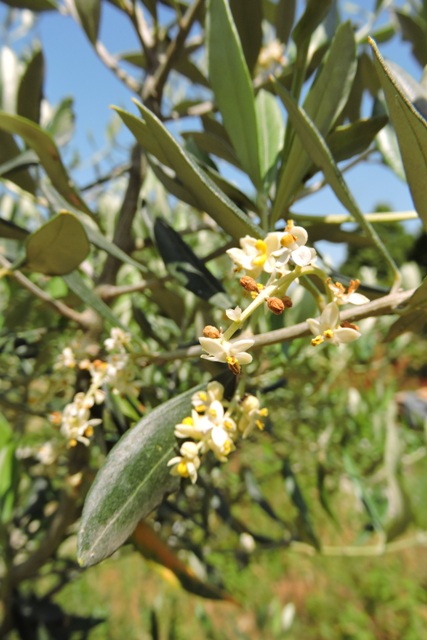
These are the table variety Ascolano from Italy. I have left a space for one more olive tree. I would like to grow a Kalamata, also a table variety, but from Greece.
And so ends another week here in Dol. Dol is a place where not much happens and where time is measured by seasons rather than weeks.
I was sent the below image this week. As I can clearly remember 1970, it really did make me think! NCG

2 Responses
Brian Homans
I share you view on dentists.
Glad I was somewhere near with the plant ID.
Marcy
Hi Norman, Great blog. Loved the pictures and details of the flowers and trees. I agree with your view
dentists. I have had some horrible experiences myself. Your home is just developing out so nicely. I
know you must be so proud. Thanks again for sharing.